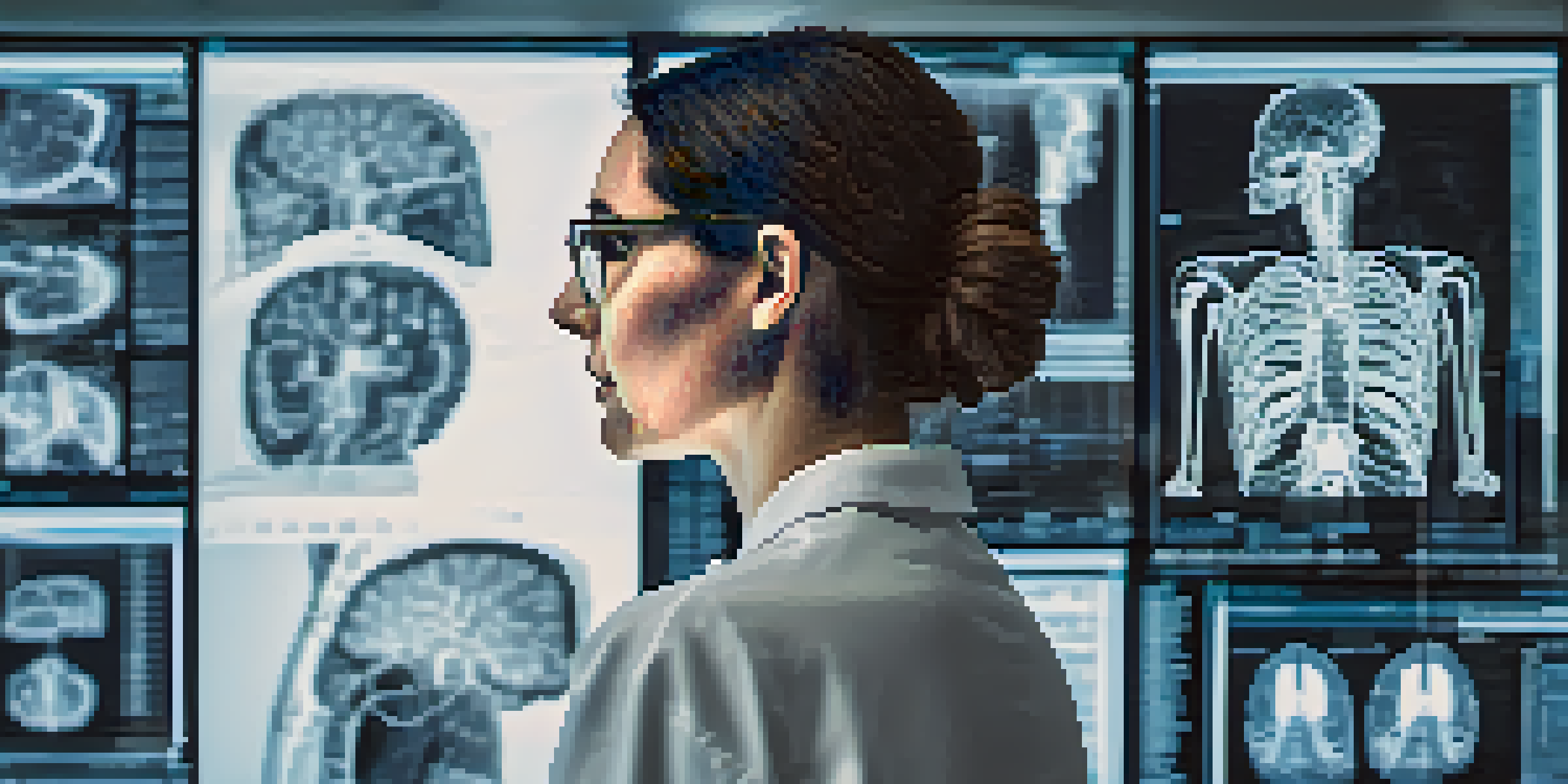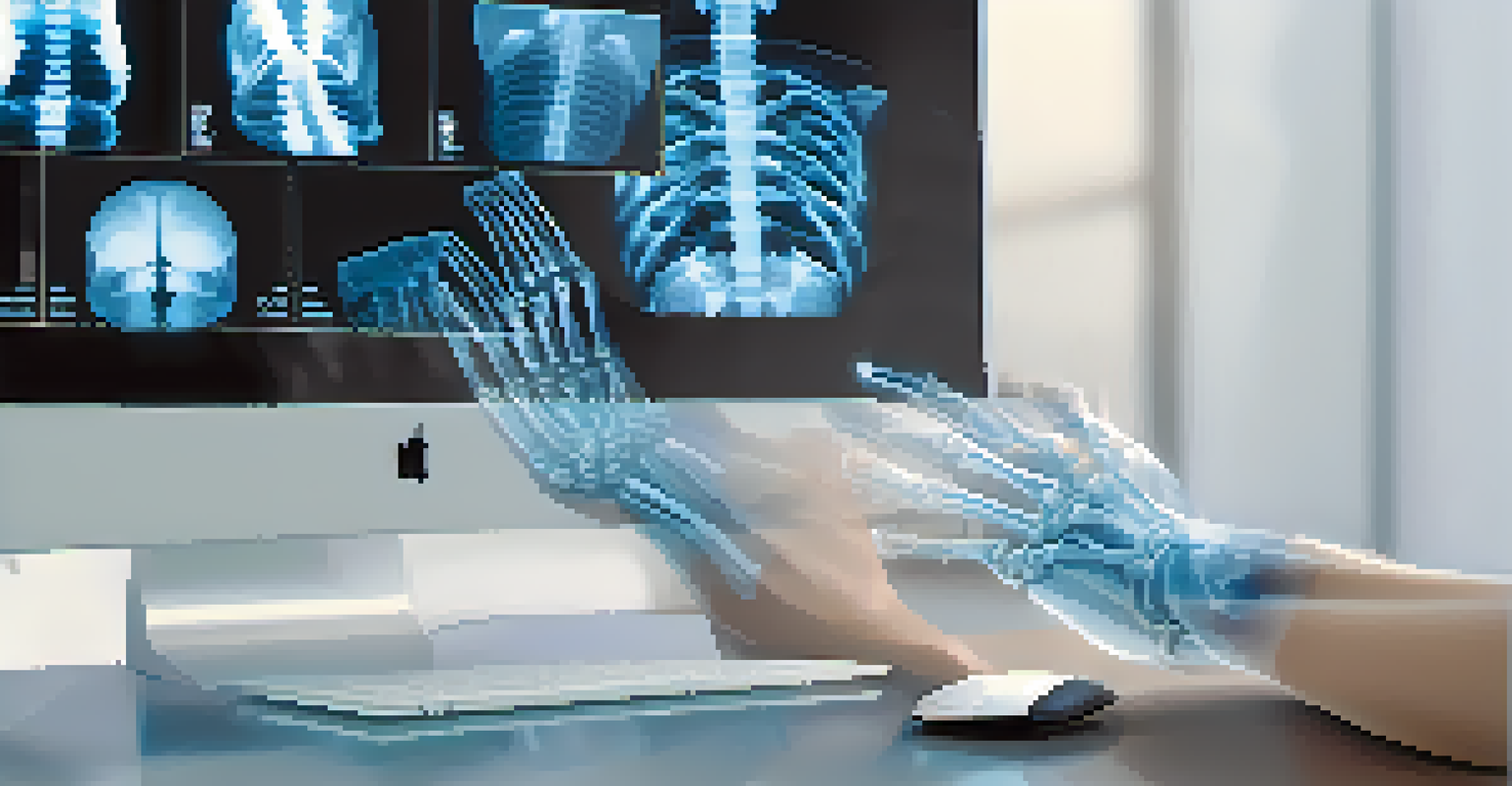Interpreting Medical Images: The Role of Radiologists

What Are Radiologists and Their Importance?
Radiologists are medical doctors who specialize in diagnosing and treating diseases through imaging techniques. They play a crucial role in patient care, as their expertise helps in identifying conditions that may not be visible through traditional examinations. Think of them as detectives, piecing together clues from X-rays, MRIs, and CT scans to unveil hidden health issues.
Radiology is a science of images, but it is also an art of interpretation.
Their training encompasses a deep understanding of anatomy and pathology, allowing them to recognize what is normal and what could indicate a problem. This knowledge is vital since a misinterpretation can lead to misdiagnosis and inappropriate treatment. Therefore, radiologists must be meticulous and well-versed in the latest imaging technologies and techniques.
Moreover, radiologists often collaborate with other healthcare professionals to develop comprehensive treatment plans. By providing insights from medical images, they contribute significantly to the overall healthcare team, ensuring patients receive the most effective care possible.
How Medical Imaging Works
Medical imaging employs various technologies to create visual representations of the inside of the body. Common methods include X-rays, MRIs, and CT scans, each with its specific use case. For instance, X-rays are often used to identify bone fractures, while MRIs are excellent for soft tissue evaluation, like examining the brain or spinal cord.

The process usually begins when a physician requests an imaging study based on a patient's symptoms or concerns. Once the images are captured, they are sent to the radiologist for interpretation. This is where the radiologist's expertise comes into play—analyzing the images for any abnormalities or signs of disease.
Radiologists as Key Healthcare Players
Radiologists use imaging techniques to diagnose and treat diseases, making them essential contributors to effective patient care.
It's fascinating how these images can reveal so much about a person's health. For example, a simple chest X-ray can help detect pneumonia, tumors, or even heart enlargement, showcasing the power of medical imaging in diagnosing medical conditions accurately.
The Interpretation Process Explained
When radiologists receive medical images, they don't just glance at them; they engage in a detailed interpretation process. This involves examining the images for any irregularities and comparing them against established norms. Radiologists often utilize computer-aided detection systems that enhance their ability to spot potential issues.
The best way to predict the future is to create it.
Once they've analyzed the images, radiologists generate a report that details their findings. This report includes observations about any abnormalities, potential diagnoses, and recommended follow-up actions. It's essential for this report to be clear and actionable, as it directly influences the patient's treatment plan.
In essence, interpreting medical images is a blend of art and science. Radiologists must not only rely on their technical skills but also on their clinical judgment to provide the best possible insights for patient care.
The Role of Technology in Imaging
Advancements in technology have dramatically transformed the field of radiology. From digital imaging to 3D reconstruction, these innovations enhance the quality and accuracy of medical images. For example, digital X-rays not only expose patients to lower radiation but also allow for immediate viewing and analysis.
Moreover, telemedicine has enabled radiologists to interpret images remotely. This is especially beneficial in rural areas where access to specialists may be limited. By leveraging technology, radiologists can provide timely diagnoses, ensuring that patients receive essential care without delay.
Technology Enhances Imaging Accuracy
Advancements like digital imaging and AI are revolutionizing radiology, improving the quality and efficiency of diagnoses.
As technology continues to evolve, so does the potential for improved diagnostic capabilities. Future developments, such as artificial intelligence, promise to assist radiologists further, helping them detect anomalies with even greater precision.
Challenges Radiologists Face Today
Despite their vital role, radiologists encounter several challenges in their profession. One significant issue is the overwhelming volume of images generated daily, which can lead to burnout and fatigue. Juggling numerous cases requires not only expertise but also the ability to maintain focus during long hours of interpretation.
Additionally, the complexity of medical imaging can sometimes lead to misinterpretations, particularly when images are not clear or when the radiologist is under pressure. This highlights the importance of continuous education and training to ensure that radiologists remain sharp and informed about advancements in their field.
Furthermore, communication is key in addressing these challenges. Radiologists must effectively convey their findings to referring physicians, ensuring that the information is understood and acted upon. Improving communication skills can enhance collaboration within healthcare teams, ultimately benefiting patient outcomes.
Collaboration with Other Healthcare Professionals
Radiologists don't work in isolation; collaboration is fundamental to their role. They often interact with a variety of healthcare professionals, including primary care physicians, oncologists, and surgeons, to discuss findings and develop treatment plans. This team approach ensures a holistic view of patient care, integrating insights from multiple specialties.
For example, when a radiologist identifies a tumor on a scan, they will often consult with an oncologist to determine the best course of action. This collaboration can lead to timely interventions and improved patient outcomes, showcasing the importance of teamwork in healthcare.
Collaboration is Crucial in Care
Radiologists work closely with other healthcare professionals to develop comprehensive treatment plans, ensuring holistic patient care.
Moreover, effective communication between radiologists and other professionals fosters trust and understanding. When everyone is on the same page regarding a patient's condition, it enhances the overall care process and can lead to more successful treatment results.
The Future of Radiology and Medical Imaging
Looking ahead, the future of radiology promises exciting developments. As technology continues to advance, we're likely to see even more sophisticated imaging techniques that provide deeper insights into patient health. Innovations such as molecular imaging may allow for the visualization of biological processes in real-time, revolutionizing how we diagnose and treat diseases.
Additionally, the integration of artificial intelligence into radiology is gaining momentum. AI algorithms can assist radiologists by quickly analyzing large datasets, identifying patterns, and even flagging potential issues for further review. This partnership between humans and machines has the potential to enhance accuracy and efficiency in diagnoses.

Ultimately, the evolving landscape of medical imaging will further empower radiologists to provide exceptional care. As they adapt to new technologies and methodologies, their role will continue to be pivotal in improving patient health outcomes.